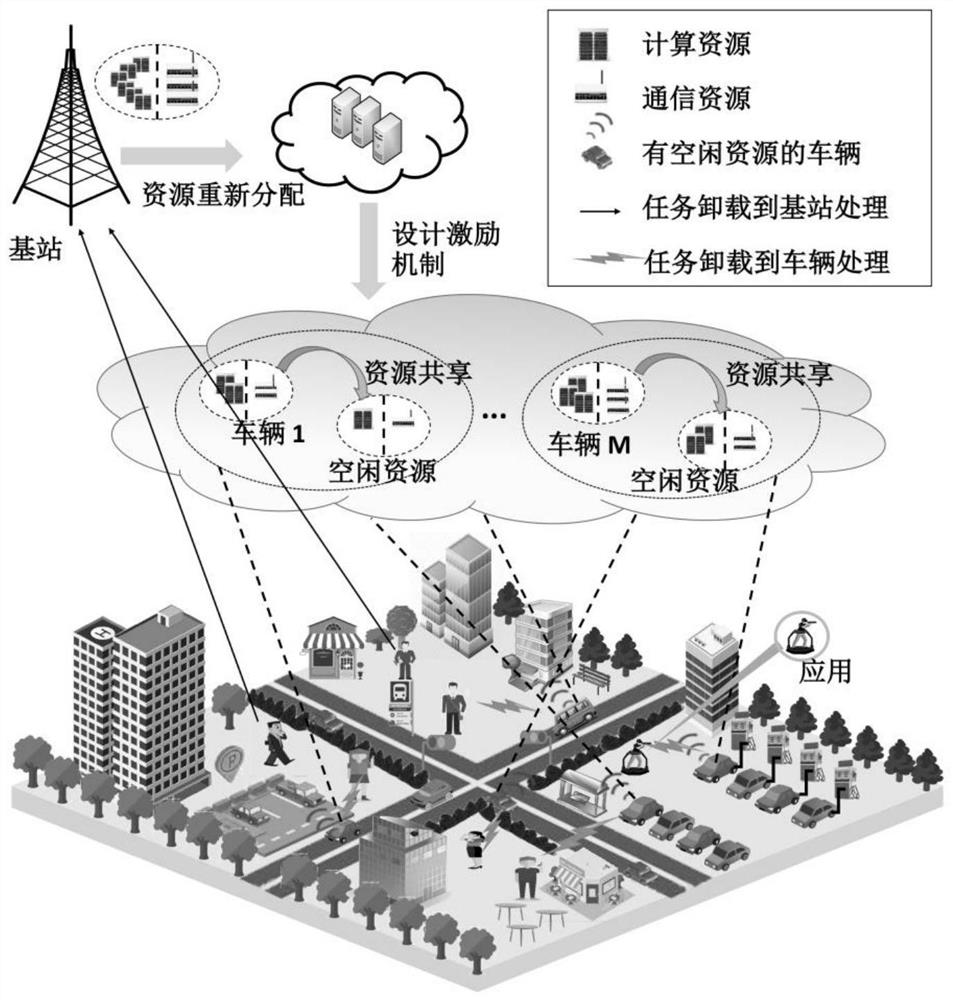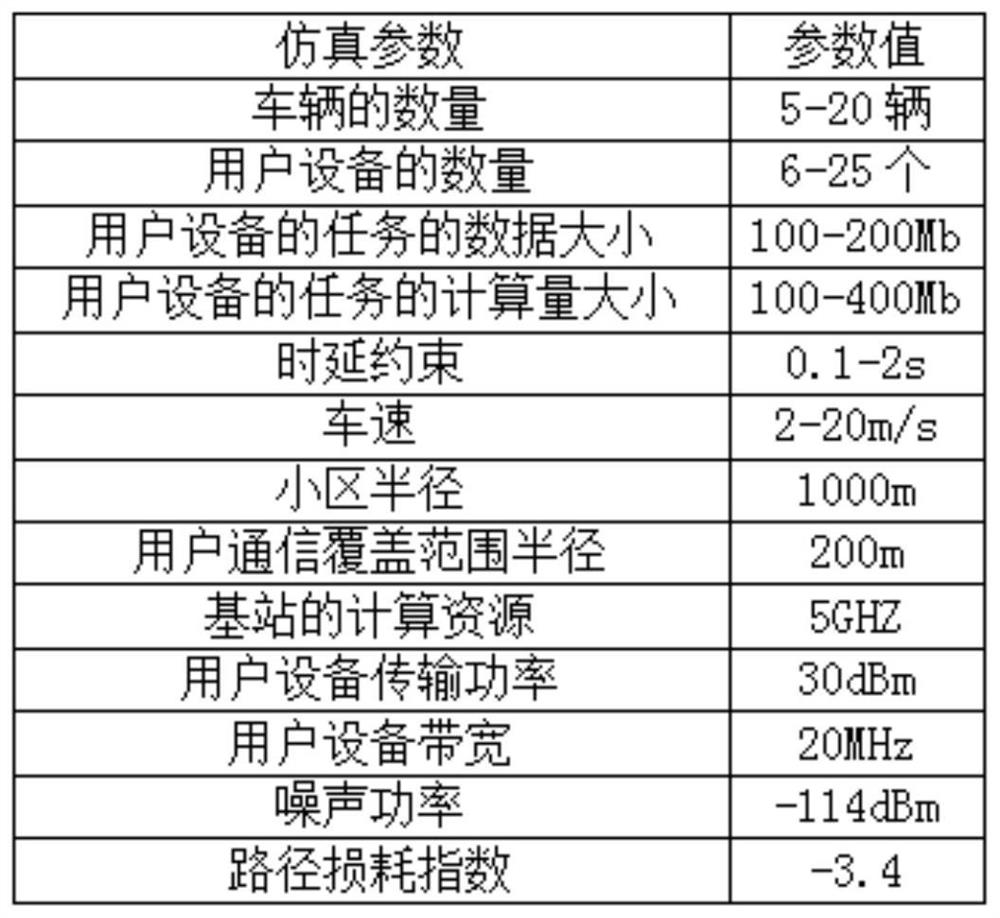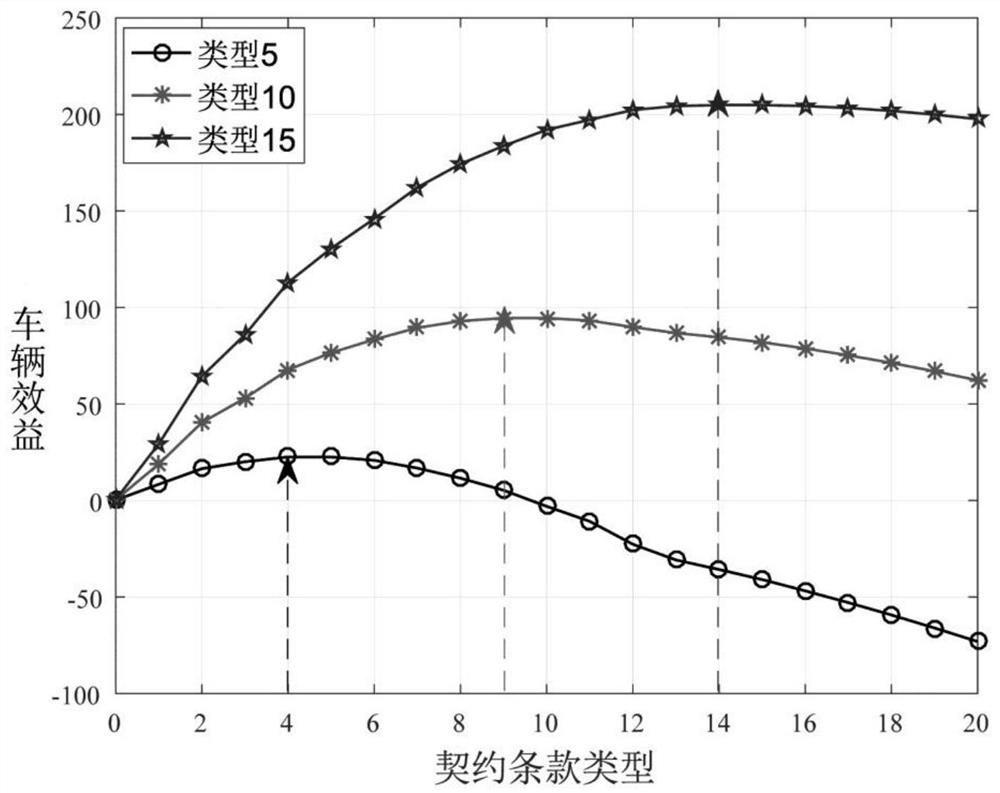A Resource Allocation and Task Offloading Method Based on Contract Theory and Matching Theory
A resource allocation and theoretical technology, applied in the field of wireless communication, can solve problems such as the lack of task allocation mechanism and the base station not having accurate information
- Summary
- Abstract
- Description
- Claims
- Application Information
AI Technical Summary
Problems solved by technology
Method used
Image
Examples
Embodiment Construction
[0042] The embodiment of the present invention is divided into two steps, the first step is to build a model, and the second step is to implement the algorithm. Among them, the model established as figure 1 As shown, it completely corresponds to the introduction of the model diagram of the Internet of Vehicles fog computing system in the summary of the invention.
[0043] 1) For the system model, the base station obtains the vehicle type distribution probability and user needs. Considering that the base station cannot grasp the precise information of the vehicle, the common incentive mechanism is no longer applicable. It is urgent to design an incentive mechanism for information asymmetry. Contract theory is a classic theory of economics, which can effectively deal with the problem of information asymmetry. At present, contract theory has been widely used in the optimization of wireless networks. Such as figure 1 As shown, the base station is responsible for resource coordi...
PUM
 Login to View More
Login to View More Abstract
Description
Claims
Application Information
 Login to View More
Login to View More - R&D
- Intellectual Property
- Life Sciences
- Materials
- Tech Scout
- Unparalleled Data Quality
- Higher Quality Content
- 60% Fewer Hallucinations
Browse by: Latest US Patents, China's latest patents, Technical Efficacy Thesaurus, Application Domain, Technology Topic, Popular Technical Reports.
© 2025 PatSnap. All rights reserved.Legal|Privacy policy|Modern Slavery Act Transparency Statement|Sitemap|About US| Contact US: help@patsnap.com



